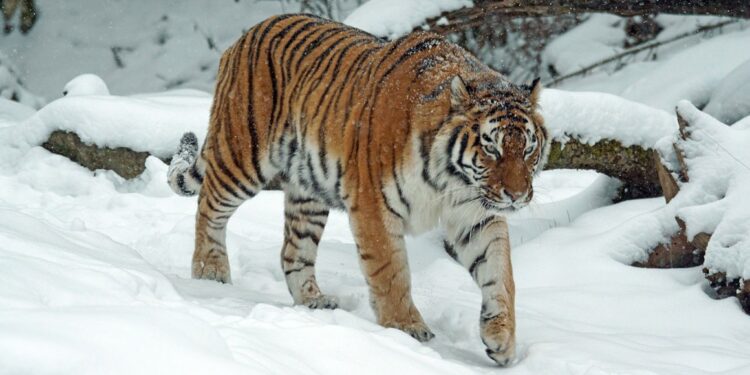The concept of de-extinction, or bringing extinct species back to life, sounds like science fiction. However, with recent advancements in genetic engineering, this might be a possibility. Although ethics and ecological implications are under heavy debate, the hope of lost biodiversity has captured the imagination of scientists and conservationists. Here are ten species that could potentially be brought back to life through the power of modern science.
- Woolly Mammoth
The woolly mammoth is one of the iconic giants of the Ice Age that went extinct about 4,000 years ago. Bringing this majestic creature back requires editing the genes of the closest living relative, the modern elephant, to replicate its traits. This could counter climate change by converting the tundra back to grassland that absorbs more CO2 than trees.
- Passenger Pigeon
Once there were billions of them, but the early 20th century saw the last of passenger pigeons due to overhunting and habitat loss. Scientists have gone a long way using DNA from museum specimens in trying to produce a hybrid pigeon that carries similar genetic markers. Passenger pigeons may then be an important part of forest regeneration if they are successfully brought back.
- Thylacine (Tasmanian Tiger)
Thylacine, the most distinguishable striped mammal, until extinction occurred in wild in early 20th century, though it died as a captive one in 1936. With its gene-edited technology of CRISPR, scientists could recover a version of this kind of mammal to reproduce in laboratory for controlling Australian invasive population.
- Great Auk
The great auk was a flightless bird that once populated the North Atlantic. The species became extinct in the 19th century, but it was similar to modern penguins and may help scientists understand how to balance marine ecosystems affected by overfishing and climate change. Reviving the great auk may also provide insight into the impacts of human interference on species survival.
- Golden Toad
This creature, the golden toad, was indigenous to Costa Rica’s cloud forests and was extirpated in the late 1980s due primarily to habitat destruction and the spread of a fungal disease called chytridiomycosis. Once these genetic techniques become more prevalent and scientists have a greater understanding of DNA in amphibians, one may imagine returning these dazzling animals to their native habitat to further health in ecosystems.
- Javan Tiger
The Javan tiger is native to the island of Java in Indonesia and last reported in the 1970s. Other subspecies of tiger remain thriving, but what is special about the Javan tiger’s adaptations to the environment in which it thrives cannot be found with any other subspecies. Revival efforts could save genetic diversity and provide knowledge of how species evolve from their environment.
- Arabian Ostrich
The Arabian ostrich is known to have once roamed the Middle East majestically. It was hunted into extinction by the early 20th century. Reintroduction via de-extinction could thus provide beneficial effects on the ecosystem by filling the ecological niche left behind by this bird. It can thereby enhance plant dispersal, thus reducing desertification.
- Saber-toothed Cat (Smilodon)
The saber-toothed cat, or Smilodon, is often portrayed in the media as a fierce predator of the prehistoric world. While the genetic material to resurrect such an animal is scarce, advancements in synthetic biology may eventually allow researchers to create a viable population. This would provide insights into how such apex predators influenced their environments.
- Aurochs
The aurochs, ancestor to modern cattle, roamed Europe and Asia until its extinction in the 17th century. European projects are already underway in breeding cattle that closely resemble the aurochs. This may help restore grasslands to their native form and promote biodiversity by creating an environmental impact similar to that which the original aurochs had on its habitat.
- Ivory-Billed Woodpecker
Once thought to be extinct, the ivory-billed woodpecker was seen in the southeastern United States in the early 2000s, leading to renewed interest in its conservation. If revival were possible, it could help restore habitats and increase awareness of the importance of forest ecosystems.
Challenges and Ethical Considerations
Of course, the path to de-extinction isn’t without its hurdles. Genetic techniques like CRISPR can edit DNA, but translation into a living, sustainable species is a significant challenge in its own right. Additionally, the reintroduction of a species into an ecosystem that has changed since its extinction can have unforeseen ecological consequences.
There are ethical considerations as well: Is it wise to introduce species that could upset the existing ecological balance? How do we prioritize our resources between de-extinction projects and the conservation of species already at risk of extinction?
Conclusion
The potential for bringing back extinct species is exciting and controversial at the same time. With gene editing and cloning capabilities at our disposal, it’s now more possible than ever to bring back extinct species. While the focus will always lie on the protection of species threatened today, the de-extinction of previously majestic creatures might well create new avenues of thinking in regard to biodiversity and conservation. Through careful scientific, ethical, and ecological consideration, de-extinction could prove an important means of correcting past errors and revitalizing the natural environment.



















